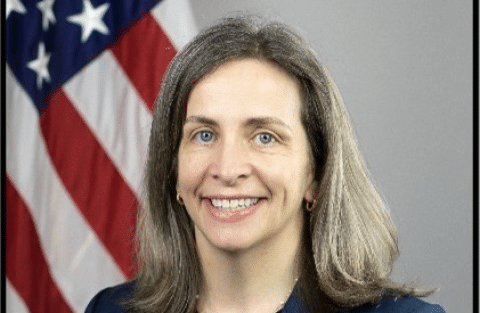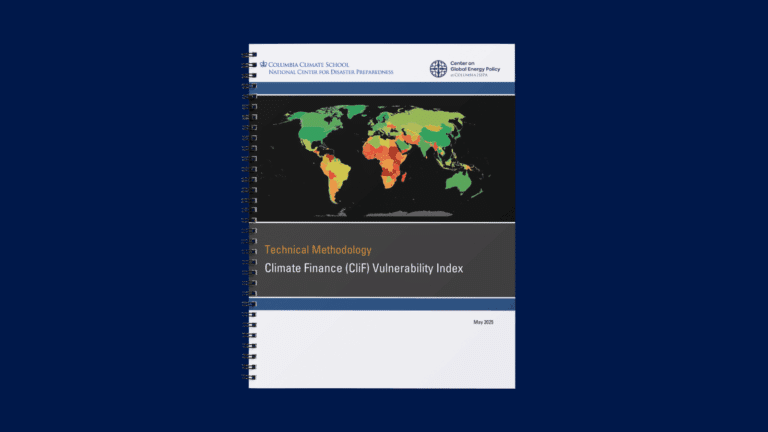This report represents the research and views of the author. It does not necessarily represent the views of the Center on Global Energy Policy. The piece may be subject to further revision. Contributions to SIPA for the benefit of CGEP are general use gifts, which gives the Center discretion in how it allocates these funds. Rare cases of sponsored projects are clearly indicated.
For a full list of financial supporters of the Center on Global Energy Policy at Columbia University SIPA, please visit our website at Our Partners. See below a list of members that are currently in CGEP’s Visionary Annual Circle. This list is updated periodically.
-
CGEP’s Visionary Annual Circle
-
Corporate Partnerships
Occidental Petroleum Corporation
Tellurian Inc
Foundations and Individual Donors
Anonymous
Anonymous
the bedari collective
Jay Bernstein
Breakthrough Energy LLC
Children’s Investment Fund Foundation (CIFF) Arjun Murti
Ray Rothrock
Kimberly and Scott Sheffield
Executive Summary
Part of the great power competition between the United States and China is a question of who will lead the low-carbon economy. One facet of this contest is building financial systems that can channel capital toward companies that are ready to adapt to this new economy and reduce exposure to companies that are not. This requires strong climate disclosure regimes that can ensure that companies provide useful information to investors to support their decision-making. The US is finalizing its first systematic series of climate disclosure mandates this year. But what does China’s disclosure regime look like? Existing literature has provided only fragmentary answers to this question.
This report, part of the China Energy and Climate Program at the Center on Global Energy Policy at Columbia University SIPA, offers the most comprehensive English-language analysis to date of China’s climate disclosure regime—the regulations, pressures, and informal norms that drive firms’ decisions around publicizing climate-relevant information about their businesses. The report begins by reviewing the climate disclosures of 39 of China’s largest carbon-emitting firms—its “carbon majors”—to provide a baseline survey of climate disclosure quality among large, emissions-intensive firms. The sample spans seven of China’s highest-emitting industrial sectors and includes both listed and unlisted firms. The Authors combine this review with an analysis of cross-national corporate climate disclosure quality datasets to map China’s climate disclosure regime.
The main takeaways of the report are as follows:
- China has a distinctive climate disclosure regime based upon three pillars: regulatory compliance; political expectations; and international investor pressure. This regime drives significant variations in the quality and depth of disclosures from China’s carbon majors. The disclosures around emissions volume, climate risk, and board-level climate responsibilities of Hong Kong–listed carbon majors tend to be more comprehensive than those of their unlisted or Shanghai- and Shenzhen-listed peer because of the stricter regulatory requirements that they face as well as their exposure to international investors. The variation in the disclosure of emissions reduction targets and mitigation plans, however, reflects political expectations. State-owned companies are more thorough disclosers in these areas because they use such disclosures to signal support for China’s national emissions peaking and reduction targets and mitigation plans.
- Disclosures by large, emissions-intensive Chinese firms tend to lag behind those of their international sector peers. The gap is especially noteworthy in sectors with a heavy presence of unlisted firms such as steel and thermal power generation. For example, the unlisted firms included in this analysis rarely disclose their carbon emissions publicly.
- The quality gaps can be explained in part by the distinctive role of the party-state—a powerful owner-regulator-financier with no parallel in most other large financial markets. It can directly express its disclosure expectations via regulation, making voluntary disclosures less meaningful. The party-state institutions that dominate China’s corporate governance can access information and exercise authority through non-public channels much more effectively than private actors in Western markets. For instance, all substantial emitters in China are already obligated to report their emissions internally to the government, though data quality remains a challenge.





